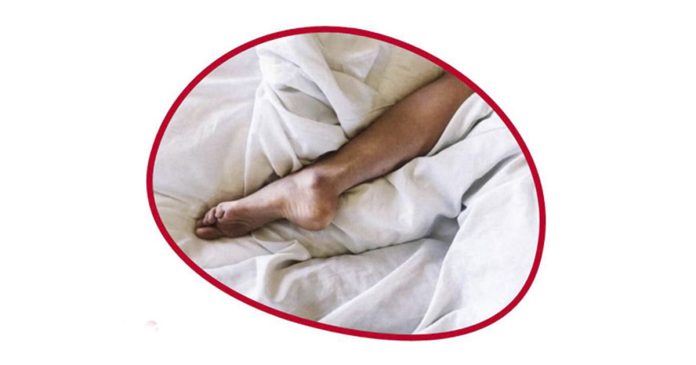Many people claim that they fall asleep faster with one foot outside the covers. While this may seem like a rather quirky habit, it actually fits with sleep biology. You see, your body needs to release heat before drifting off each night. Essentially, a bare foot acts like a small, easy heat-release valve. The effect can be felt immediately and can be surprisingly soothing on warm nights. In this article, we will find out why one foot out of the blanket helps you sleep better. We will also find out how cooling supports sleep and why feet help so much. Additionally, we will discuss aspects such as bedroom temperature, simple routines you can follow, and practical suggestions. Read further if you want to improve your sleep as soon as this evening!
The One-Foot Effect
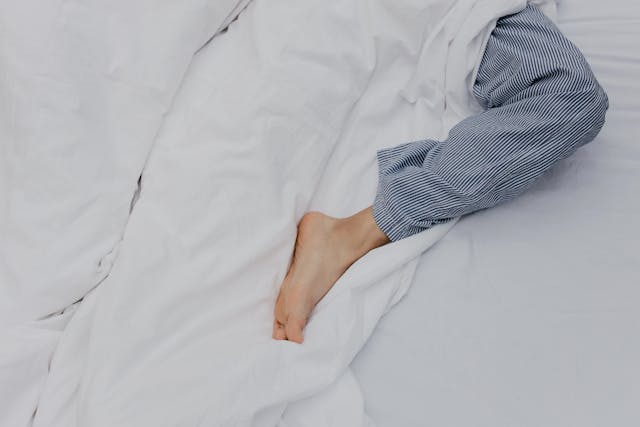
Sticking one foot out of the blankets allows your body to lose heat quickly. The uncovered skin is cooled by the air, and that gentle cooling helps your core temperature drop, which supports falling asleep. The effect is most noticeable when your bedding traps heat or the room feels warm. Exposing a small area of your body to the cool air prevents overheating without having to remove every blanket. It‘s pretty much like cracking a window in a stuffy room, allowing a cool breeze to air out the room. Many sleep educators stress that temperature is a powerful cue for sleep. Scientists agree that faster heat loss typically results in falling asleep quickly. As we shall learn, an uncovered foot is simply the easiest way to increase heat loss without getting out of bed.
We run on a circadian rhythm that lowers our core temperature in the evening. As bedtime approaches, warm blood is routed toward the skin to help release heat. That process makes the core slightly cooler, which your brain interprets as a signal for sleep. Scientists track this with various body and skin temperature measures across the night. Deep non-REM sleep coincides with the lowest core temperature. Meanwhile, skin temperature rises as more heat travels outward for release. Warm skin can actually help your core cool by opening blood vessels. This is one reason a warm bath can help if timed correctly. If your bed is warm this evening, uncovering a foot is a quick and simple way to sync with your natural temperature drop.
Body Temperature and Sleep
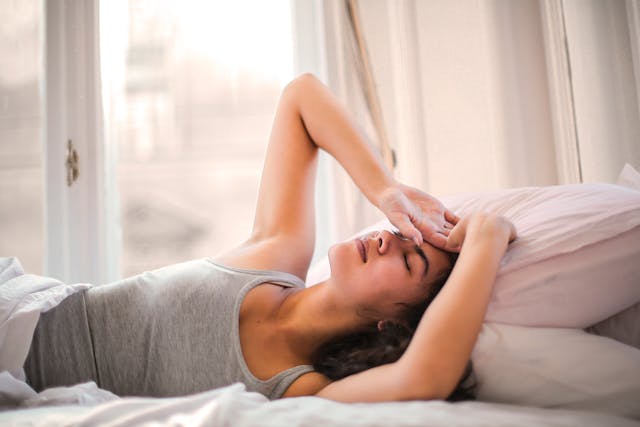
Your brain expects a gentle temperature drop before sliding into sleep. Scientists use a measure called the distal-to-proximal gradient, or DPG. It compares the warmth in your hands and feet with the warmth near your trunk. A larger gradient means more heat is leaving through your extremities. When that gradient rises, people usually fall asleep more quickly. In studies, distal skin warming and heat loss predicted shorter sleep latency better than other markers. This relationship is not subtle and remains even when considering melatonin timing and heart rate. An uncovered foot speeds heat exchange and strengthens the gradient. This small nudge can have a huge impact on sleep timing.
Hands and feet have unique blood vessel shortcuts called arteriovenous anastomoses. These small valves shunt blood directly from your arteries to your veins in hairless skin. When they open, warm blood rushes near the surface, efficiently dumping heat. This feature is concentrated in the palms and soles, making them powerful radiators. This lets your body fine-tune temperature quickly and quietly. Opening these vessels increases the loss of heat dramatically compared with similar areas elsewhere. Now, think about your bedtime routine. If your room feels a little warm, exposing a foot recruits these natural radiators on demand. You do not need to throw all the blankets off and lose comfort everywhere as airing one foot lets your body fine-tune cooling second by second.
The DPG in Action
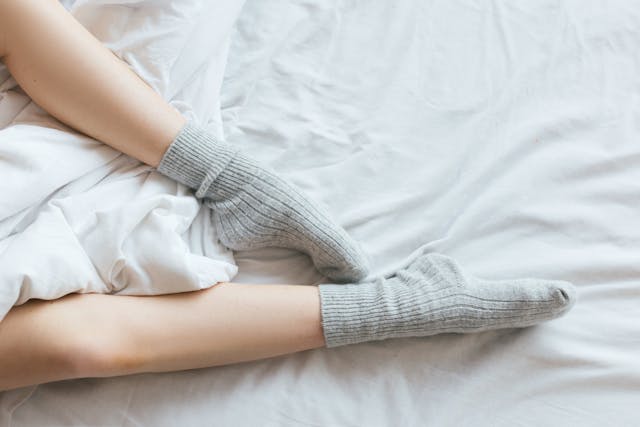
Studies have linked warm hands and feet, plus a higher DPG, to falling asleep faster. They found that the gradient beat other measures for predicting sleep timing. The same pattern can be observed in adults and even in infants at home. Warming or freeing feet changes the gradient, and sleep follows shortly afterwards. It’s important to remember that cold, tight vessels in the feet can delay the onset of sleep by preventing heat loss. Therefore, the goal is to achieve balance, not chilling your toes or shivering. Either letting one foot breathe or gently warming your feet can help. It’s up to you to choose the approach that matches how your body feels at bedtime. Warming your feet before going to bed can help your core cool down later.
Some people use bed socks because they tend to shorten sleep latency and reduce night awakenings. Additionally, warm footbaths show similar benefits when they are taken in the evening. Certain reviews also suggest that warm baths or showers can help when they are timed well. The trick is to try finishing the warm bath one to two hours before bed. The timing matters because you want skin blood vessels open as your core begins to drop. A hot soak right before lights out may feel soothing, but can briefly raise core temperature too much. Aim to finish earlier, dry off, and let the post-bath cooling cascade do its job. If you tend to run cold, socks can preserve the effect without overheating you.
The Ideal Sleeping Temperature
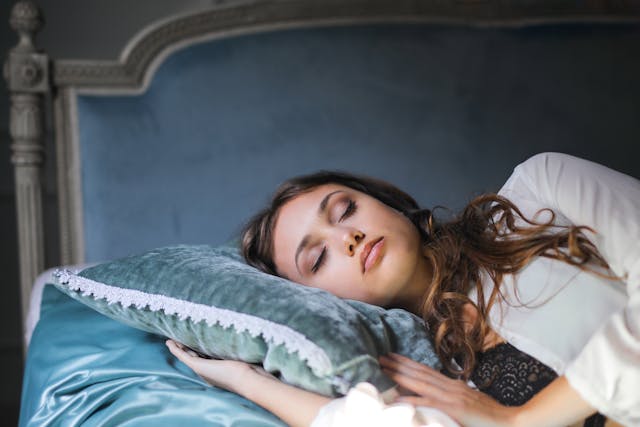
Most adults tend to sleep best in a cool bedroom with a temperature of around 18 degrees Celsius. Experts typically recommend a range of around 15.6 to 19.4 degrees Celsius for optimum comfort. It also harmonizes with your natural circadian temperature rhythm overnight. People vary, so test incremental changes on successive nights until your sleep feels effortless. Warmer rooms slow the body’s required temperature drop and often result in fragmented sleep. However, colder rooms can cause shivering, stress responses, or midnight wakeups. Cooler air with sufficient bedding usually hits the sweet spot. Older adults often prefer slightly warmer rooms, while children need more protection from overheating.
Humidity and airflow also affect the experience, so you may consider investing in a fan or a light duvet. What matters most is enabling that evening temperature descent without jolting your body. If your bed still feels warm, remember the simplest release valve. Let one foot breathe and reassess your comfort within minutes. Keep blankets breathable and avoid heat-trapping foams or heavy comforters. If your partner runs hot and you run cool, consider a split duvet approach. Whatever your starting point, keep your system stable and predictable night to night. Your body likes consistency because it can anticipate the temperature drop before lights out.
Using the Foot Trick with Other Sleep Hacks
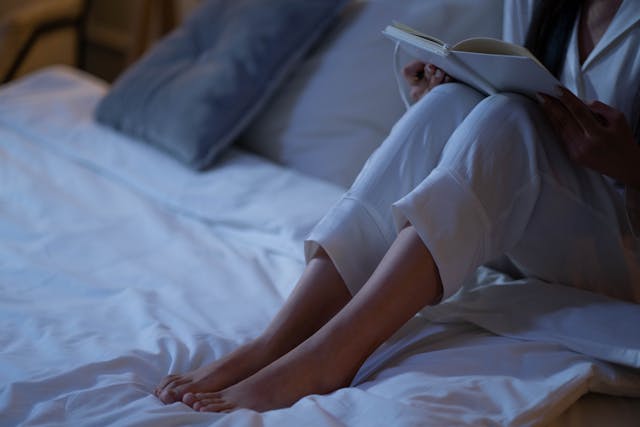
The impact of temperature is powerful, but there are also other small habits that can multiply the effect. For example, dimming bright lights two hours before bed helps avoid any delay of melatonin release. As we mentioned earlier, a warm shower one to two hours before lights out opens skin vessels. Remember to finish earlier so that your core can fall as you dry and relax quietly. It’s also important to rather keep caffeine consumption to the mornings and early afternoons to ensure deeper sleep. It is better to reserve the bed for sleep and intimacy rather than scrolling through social media or emails.
If you do have any bothersome thoughts about the next day running through your mind, jot them down on paper to offload some of the mental noise. It also helps to keep late dinners light and avoid heavy alcohol, which ultimately leads to fragmented sleep later. Ultimately, it’s important to build a pre-sleep ritual that repeats at the same time every night, preparing your body for the transition to sleep. Then, when you get into bed, add the uncovered-foot move as your final “tuning knob” for your ideal level of comfort. If you tend to get cold later, keep light socks nearby to restore comfort. Use a quiet fan for airflow and white noise without chilling your neck. If pain is an issue, avoid nighttime anti-inflammatory drugs that may constrict vessels.
The One Foot Trick May Not Work For Everyone
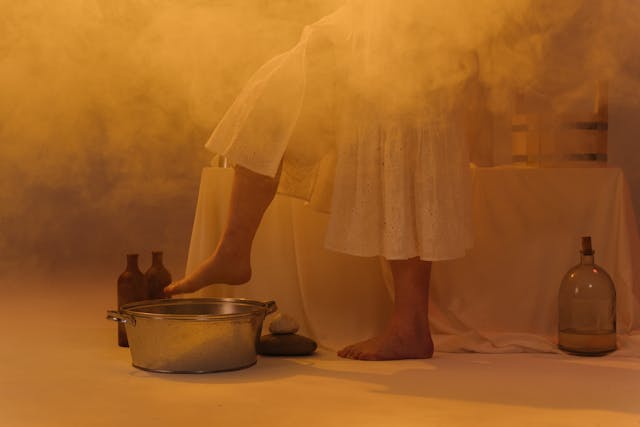
Not every sleeper will love a dangling foot, and that is okay. People with very cold extremities may prefer gentle warming to open vessels first. Socks or a brief warm footbath can make the uncovered-foot step more effective. Those with neuropathy, Raynaud’s symptoms, or circulation issues should prioritize warmth. Young children should avoid being too cold and may kick off covers unpredictably. If your room is already cool and your bedding light, the trick may not do too much. Allergies, pain, caffeine, stress, or late exercise can overwhelm temperature benefits. In those cases, combine temperature strategies with calming routines and earlier workouts. If hot flashes disrupt your night, layered bedding helps fine-tune relief quickly. Finally, consider your mattress and pillow materials because heat retention varies widely. Breathable foams and natural fibers reduce overheating that triggers nightly foot escapes. Personalize these choices generously and let comfort be the final judge.
Addressing A Few Common Questions About This Trick
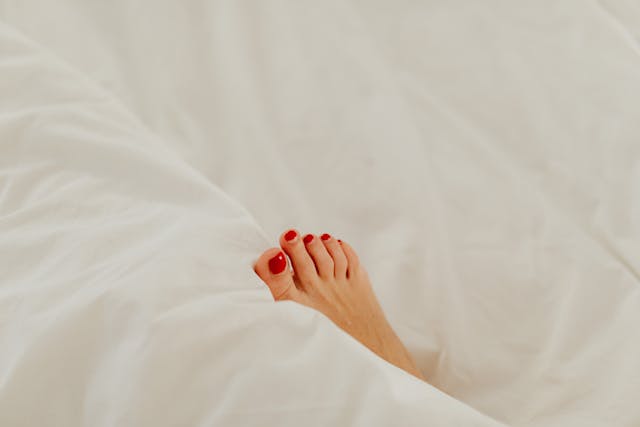
Many people ask how long you should keep a foot exposed at bedtime. Well basically, you should keep it out until comfort returns and you start to feel drowsy. Some people switch feet or uncover an ankle if air feels chilly. Others pair an exposed foot with a fan for gentle airflow. What about seasons and bedding across the year for comfort? In summer, choose breathable layers so the feet are not overloaded. In winter, use the trick briefly, then recover your foot when settled. Couples often run at different temperatures and need flexible options. Split duvets or an extra throw at the foot can help greatly. Another common question is if the trick works for kids who sleep hot or kick blankets. Well, children often self-vent, so keep rooms cool and bedding light. The core principle stays the same for every age: control temperature.
People also wonder what to do if the foot gets cold quickly. Try a thin sock, then slide the toes out when you feel warm. If your feet are often icy, warm them first with a short footbath. Some ask whether pets or drafts ruin the effect or cause wakeups. Position your fan to move air gently without blowing directly on toes. Travelers ask how to use this trick in unfamiliar hotels or guest rooms. Pack breathable pajamas and choose the lighter blanket, then vent with one foot. Weighted blankets can work if they are breathable and not overly warm. Hot flashes or night sweats may need faster adjustments and layered bedding. People with circulation problems should prioritize warmth and ask their clinician for guidance. Finally, remember to keep sheets clean and breathable for better airflow and comfort. Small, steady adjustments usually solve most issues within a few evenings.
The Bottom Line on Why Having One Foot out of the Blanket Helps Sleep
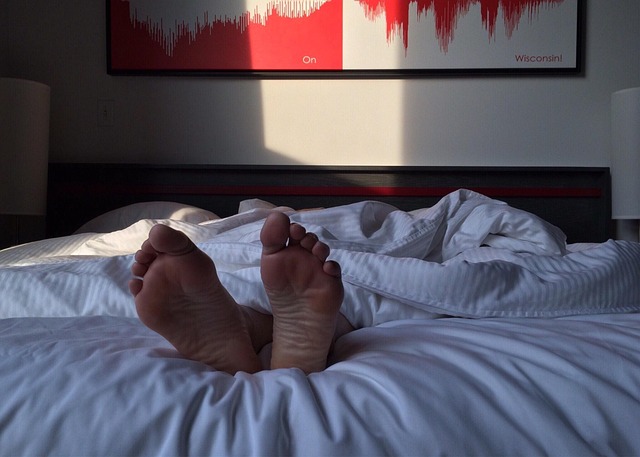
Many research lines support a temperature-first approach to better sleep. They found that distal vasodilation predicts faster sleep onset across controlled studies. Basically, the answer is thermoregulation, not a mysterious sleep trick. Your body needs to effectively shed heat before early sleep cycles can settle. Hands and feet are built to help, using powerful heat-release pathways. An uncovered foot increases heat loss without losing the comfort a blanket provides. That small outlet helps your core continue its evening temperature drop. Faster cooling usually means a smoother transition into non-REM sleep. If you wake feeling hot at night, try the foot trick again. It is not magic or a placebo, just basic physiology doing its job.
The method is flexible and safe, which helps explain its popularity. If you like clear targets, start at about 65 degrees Fahrenheit. That number aligns with your body’s natural overnight temperature rhythm. Everyone varies, so test one-degree changes on different nights. Keep blankets breathable and avoid heavy, heat-trapping materials if possible. If your partner runs hot and you run cool, split blankets help. A fan can add airflow and soft noise without chilling your face. Older adults often like a slightly warmer range for comfort. Babies need a cool room and careful layering to avoid overheating. Whatever your setting, keep it consistent from night to night. Stability plus a small outlet, like one foot out, works reliably.
Disclaimer: This information is not intended to be a substitute for professional medical advice, diagnosis or treatment and is for information only. Always seek the advice of your physician or another qualified health provider with any questions about your medical condition and/or current medication. Do not disregard professional medical advice or delay seeking advice or treatment because of something you have read here.Disclaimer:
